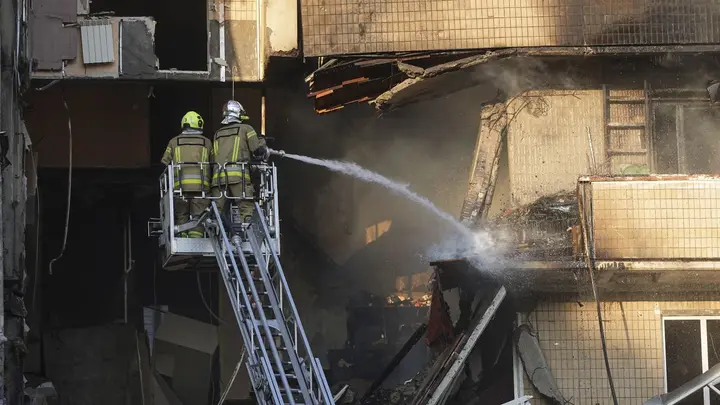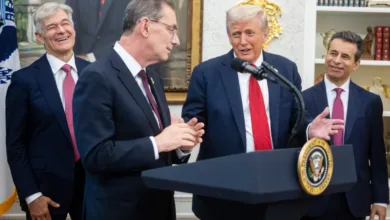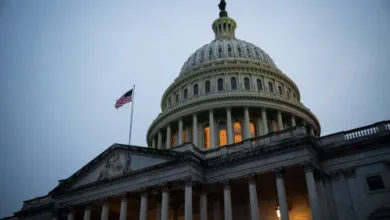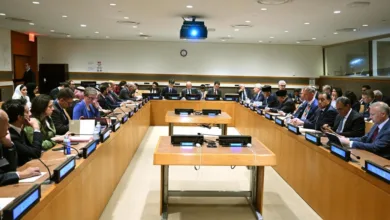Russia Escalates Conflict with Largest Airstrike on Ukraine Amid Fleeting Peace Talks

The war in Ukraine reached a new intensity on Sunday, September 7, 2025, as Russian forces launched their largest air attack since the conflict began. The strike, involving a combination of drones, decoys, and missiles, signaled an escalation that has both strategic and humanitarian implications. The attack occurred while tentative talks of peace and security negotiations were being floated, including an invitation from Russian President Vladimir Putin to Ukrainian President Volodymyr Zelenskyy for meetings in Moscow. This juxtaposition of dialogue and aggression underscores the fragile and volatile nature of the ongoing conflict.
The Scope of the Attack
According to the Ukrainian Air Force, the attack included 810 drones and decoys, along with at least 13 missiles. Despite the overwhelming scale of the offensive, Ukrainian forces were able to intercept 747 drones and four missiles. Nevertheless, the strike caused casualties and structural damage, particularly in Kyiv, the nation’s capital. Reports indicate that at least two people were killed and 20 others injured, though total casualty numbers are still being confirmed.
Images emerging from Kyiv reveal that both government and residential buildings were affected. Smoke and debris filled the streets, emergency services rushed to extinguish fires, and access to damaged areas was restricted as authorities worked to secure the sites.
Targeting Kyiv’s Cabinet of Ministers
Among the most significant aspects of the attack was the apparent targeting of the Cabinet of Ministers building in Kyiv. This marks a stark departure from previous Russian airstrikes, which largely avoided hitting government offices in the Ukrainian capital. The building houses Ukraine’s Cabinet, including offices for key ministers responsible for national governance and policy implementation.
Ukrainian Prime Minister Yulia Svyrydenko confirmed the damage, stating that the building’s roof and upper floors were impacted. “For the first time, the government building was damaged by an enemy attack,” she said. “We will restore the buildings, but lost lives cannot be returned.” The Prime Minister emphasized the need for international action to respond to such destruction, calling for stronger sanctions, particularly targeting Russian oil and gas exports that fund the war effort.
The Mechanics of the Assault
The Air Force reported that hits from nine missiles and 54 drones were recorded at 33 locations across Ukraine. Debris from shot-down targets fell at eight sites, demonstrating both the scale of the Russian strike and Ukraine’s robust air defense capabilities. Emergency personnel worked tirelessly to extinguish fires, manage evacuations, and provide medical care to the injured.
The attack reflects a sophisticated approach by Russian forces, integrating unmanned aerial vehicles (UAVs) with traditional missile systems. This combination not only maximizes damage potential but also complicates defensive responses. The use of decoys alongside drones indicates a strategic attempt to overwhelm Ukrainian radar and missile interception systems.
International Reactions and Geopolitical Implications
The timing of the attack is particularly noteworthy, coinciding with discussions of potential peace talks. Russian President Vladimir Putin invited President Zelenskyy to Moscow for security discussions, an invitation that underscores the complex duality of military aggression and diplomatic overtures. Analysts suggest that this may be a tactic to gain leverage in negotiations while demonstrating military dominance on the ground.
International reactions have varied. In the United States, President Donald Trump recently urged European leaders to cease purchasing Russian oil, pointing out that energy imports indirectly fund the ongoing conflict. The European Union has significantly reduced Russian oil imports, yet a complete cutoff has not been achieved, leaving room for continued economic leverage.
The United Nations and other international organizations have called for restraint and emphasized the need for renewed negotiations to prevent further escalation. Humanitarian agencies have highlighted the immediate need to protect civilians in Kyiv and other affected areas, stressing the importance of access to medical care, emergency shelter, and reconstruction efforts.
Humanitarian and Strategic Consequences
The strike has amplified concerns about civilian safety in Ukraine’s cities. Urban centers are vulnerable to drone and missile attacks, and the destruction of critical infrastructure, including government buildings, raises questions about continuity of governance and public services.
The damage to the Cabinet of Ministers building is symbolic as well as practical. It signals a direct threat to the operational capacity of Ukraine’s government and represents a psychological blow to both officials and citizens. The strategic choice to target the heart of Ukrainian governance reflects an intent to destabilize administrative functions while maintaining military pressure.
Ongoing Developments and Uncertainty
As of this writing, the situation remains fluid. Ukrainian authorities continue to assess damage, confirm casualty figures, and coordinate responses to the widespread airstrikes. The broader implications for peace negotiations remain uncertain, as both sides balance aggressive military operations with tentative diplomatic overtures.
Analysts note that the dual approach of attacking while extending invitations for talks may serve multiple purposes: signaling strength, demonstrating the ability to escalate at will, and creating leverage in any potential discussions over ceasefires or security agreements.
The attack underscores the persistent volatility of the region, reminding the international community that military actions continue even amid calls for diplomacy. The response from European and American leaders in the coming days, particularly regarding sanctions, military aid, and diplomatic engagement, will be crucial in shaping the next phase of the conflict.
The largest airstrike on Ukraine since the war began represents a pivotal moment in the ongoing conflict. It highlights the complex interplay between military aggression and diplomatic negotiations, the resilience of Ukrainian defenses, and the urgent need for international attention to civilian safety and strategic stability. As Ukraine continues to recover from the immediate effects of the attack, the global community faces critical decisions regarding sanctions, support, and pressure on Russia to engage in meaningful dialogue.




